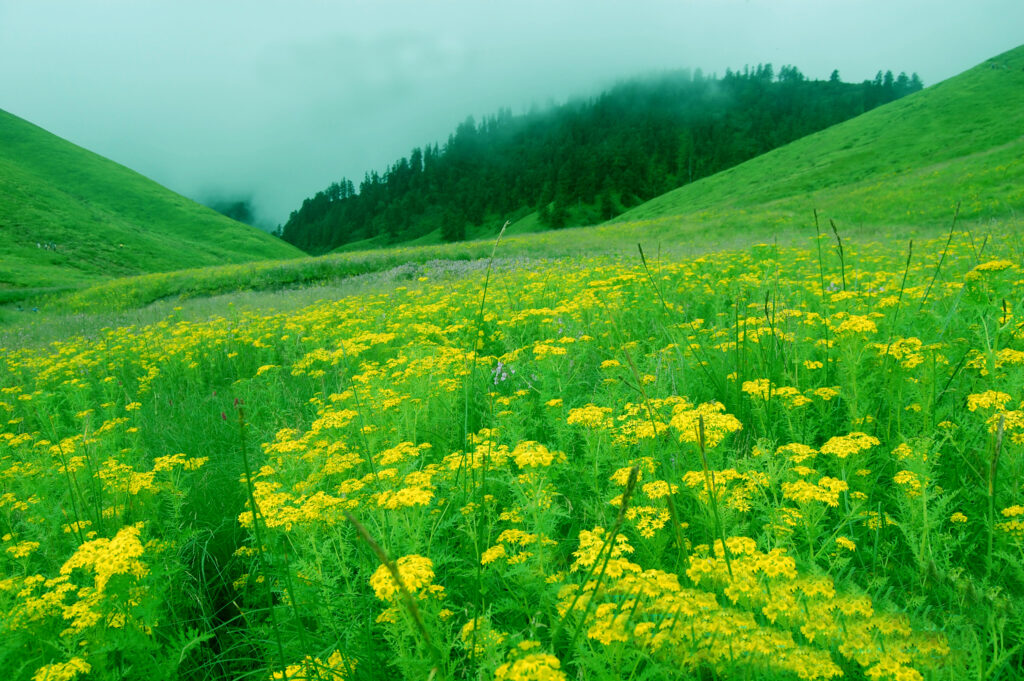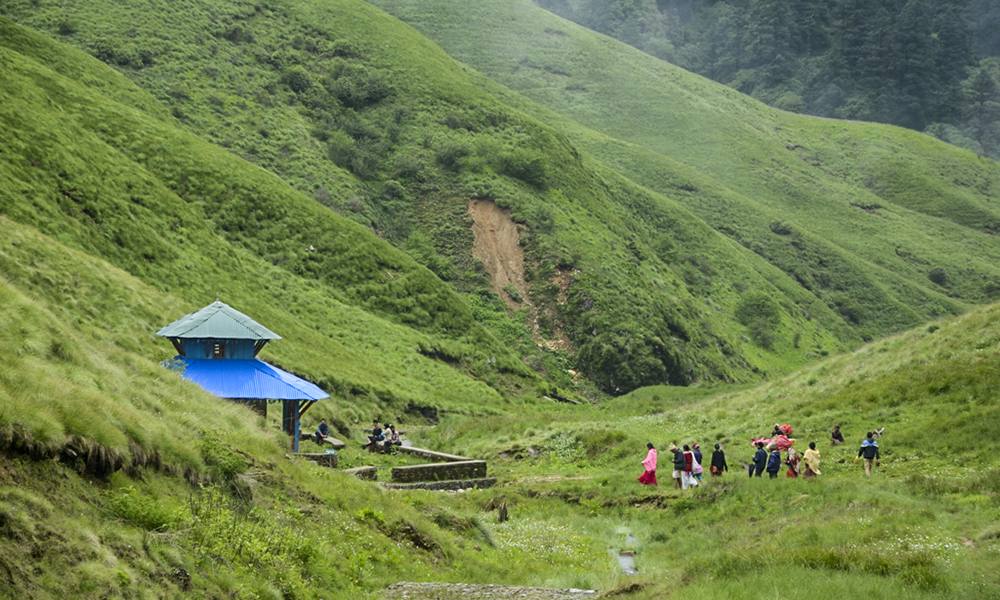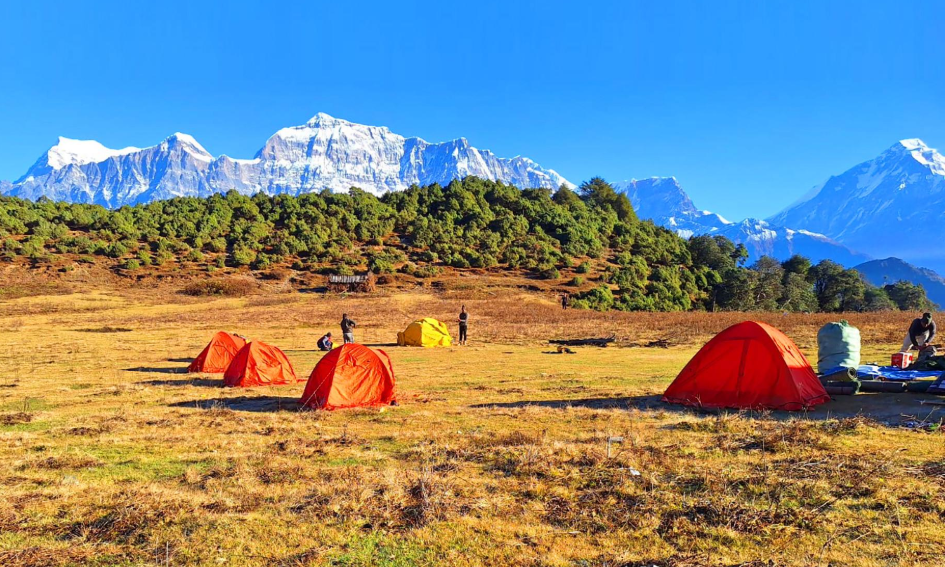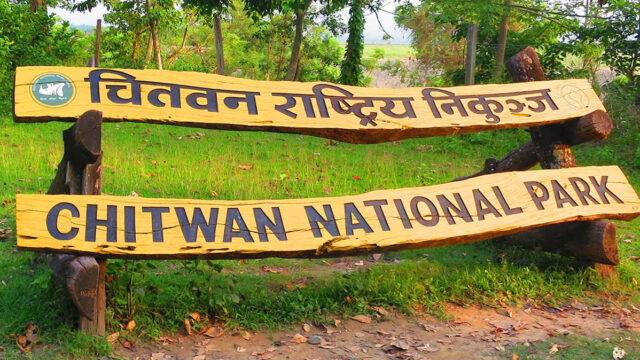Until just five years ago, Jaljala remained largely unnoticed on Nepal’s tourism map. Although a few domestic visitors made their way there occasionally, it had not yet caught the broader attention of travelers. However, recent years have seen a remarkable surge in both domestic and international tourists visiting this stunning highland nestled within the Dhorpatan Hunting Reserve, Nepal’s only hunting reserve.
Jaljala; As A Tourist Destination
Tourists reach Jaljala by crossing dense forests and expansive meadows from the Dhorpatan Valley. With its peaceful environment and panoramic views of snow-capped peaks right before the eyes, It has become a year-round attraction. Located 22 kilometers east of the Dhorpatan Valley, it also draws pilgrims en route to the revered Dhorbarahi Temple. During the monsoon, its lush greenery captivates nature lovers, while in winter, the snowy landscape offers a unique charm for those seeking a cold-weather retreat.
According to Jeevan Pun, Chairperson of the Dhorpatan Valley Hotel Entrepreneurs’ Association, Jaljala, which previously saw visitors mainly during the autumn months, is now welcoming tourists throughout the year. He shared that It is accessible via 18 kilometers of road travel followed by a 4-kilometer hike from Dhorpatan.

Pun attributes the growing popularity of Jaljala to improved road connectivity and increased promotion. “Earlier, only a few travelers made it here, but now many come daily. On average, about 3,000 tourists visit Jaljala monthly,” he added. “The serene atmosphere, breathtaking mountain vistas, and easier access from Dhorpatan have significantly boosted its appeal.”
With temperatures soaring in the Terai region, many people from the lowlands are flocking to Jaljala to escape the heat. Situated at an altitude of 3,400 meters above sea level, It offers sweeping views of over two dozen Himalayan peaks, including Dhaulagiri, Machhapuchhre, Annapurna, Manapathi, Putha, Churen, Gurja, and Nilgiri, all visible from a single vantage point.
As tourism increases, local hospitality businesses are also experiencing growth. Chairperson Pun advised tourists to contact hotels in advance to ensure accommodation due to rising demand. Sudip Subedi, a visitor from Bhairahawa, described Jaljala as incredibly beautiful. “It was unbearably hot in the Terai, so we came to Dhorpatan for a week-long escape. The hotel owners here suggested we visit Jaljala. Initially hesitant, I’m now grateful we did, I’ve never seen so many mountains from one spot. It truly feels like paradise.”

Similarly, Nitesh Tamang, a tourist from Pokhara, praised the captivating beauty of Jaljala. Although he described the road from Burtibang to Dhorpatan as risky, reaching Jaljala made the journey worthwhile. He emphasized the importance of improving roads and trekking trails to attract more foreign tourists. “If the road to Dhorpatan alone could be improved, Jaljala would see a massive increase in visitors,” he noted.
In addition to Jaljala, tourists are now also trekking to Bukipatan during the monsoon season. This scenic destination can be reached via a 4.5-hour hike from the valley. The trail is narrow and challenging, but its natural charm continues to draw adventurous trekkers.
To improve accessibility, the Baglung Office of Industry and Tourism is currently constructing a 3-kilometer trekking trail from Pakhathar to Garpacheda. According to Chief Officer Para Singh Thapa, the trail is being built with a budget of NPR 2 million allocated by the Gandaki Provincial Government for the current fiscal year. The initiative aims to make the journey to Bukipatan easier and safer for tourists. With rising tourist interest, Jaljala and its surrounding areas are poised to become one of Nepal’s most enchanting and sought-after travel destinations.






